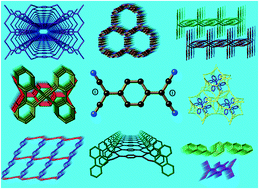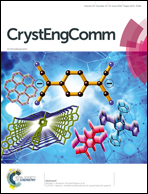X4TCNQ2− dianions: versatile building blocks for supramolecular systems
Abstract
In 2008 a new approach to generating tetracyanoquinodimethane (TCNQ)-based materials was described which involved the use of the diprotonated, reduced form of TCNQ (TCNQH2) as a reactant. Since the initial work, the dianionic forms of TCNQH2 and F4TCNQH2 have been incorporated into a wide assortment of coordination polymers in which the ligand, with four potential donor atoms, binds to a variety of metal centres. The structures of neutral 1D, 2D and 3D coordination polymers are described, in addition to the structures of anionic networks. Not surprisingly, the oxidation state of the metal ion as well as its preference for certain coordination geometries has a major influence upon the topology and geometry of the polymeric material. In addition to the identity of the metal centre, the type of structure obtained depends upon the nature of the co-ligand in the case of neutral polymers. For anionic networks the shape, charge and size of the counter-cation impacts upon the network connectivity. The large number of metal compounds formed with the dianions is in contrast with the relatively small number of metal complexes involving TCNQ and F4TCNQ in the 0 and −1 oxidation states. In addition to coordination polymers, organic salts of TCNQ2− and F4TCNQ2− have also been investigated. The packing within these crystalline salts has been categorised into four types. In both the case of the coordination polymers and the organic salts, charge transfer interactions are common with the electron-rich TCNQ2− and F4TCNQ2− dianions often serving as electron donors. The presence of various species in the crystal that can act as electron acceptors normally leads to intensely coloured crystals. Whilst TCNQ2− and F4TCNQ2− dianions have been shown to be versatile building blocks capable of yielding a variety of unusual and aesthetically appealing structures, the redox activity of these dianions offers the prospect of creating materials that possess fascinating electronic properties. An overview of the types of structures obtained since 2008 using the TCNQH2/F4TCNQH2 synthetic approach is presented.

- This article is part of the themed collection: 2018 Highlight article collection


 Please wait while we load your content...
Please wait while we load your content...
